Puzzling 17th century burial
The man who was buried face down
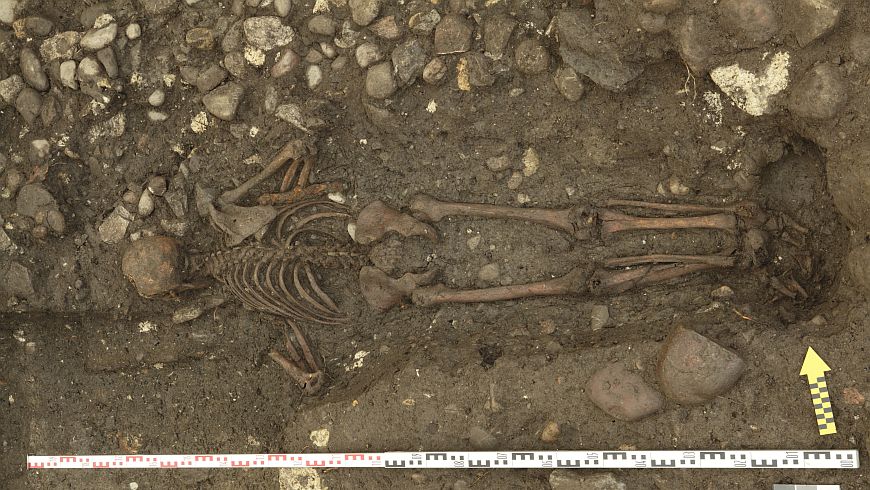
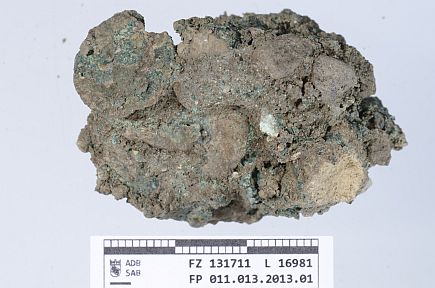
Somewhat separated from the others, this man was laid face down in his grave. “This is quite unusual,” according to Weiss. Further evidence came to light as the grave was excavated which confirmed the suspicion that this man had died under unusual circumstances. Next to the body the archaeologists found a knife and several coins, corroded together into a single block of metal – the remains of a purse.
Why was the man interred in such an unusual way? The archaeologists have put forward several theories in explanation. It is quite possible that the burial had to be done in a hurry, leaving no time to prepare the body, for had the dead man been washed first, as was then the custom, the purse would have been found and removed. The tradition of placing objects in the grave along with the corpse had long passed by the time of burial, so then what exactly had happened? Did the poor chap die from an infectious disease, necessitating immediate burial? Or was this a case of robbery and murder, or perhaps an act of revenge?
Coins could provide evidence
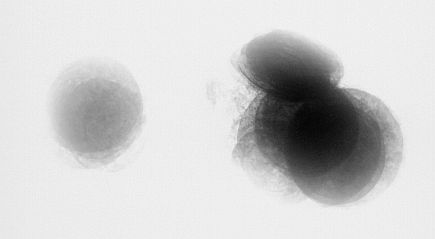
24 coins of different currencies in the purse
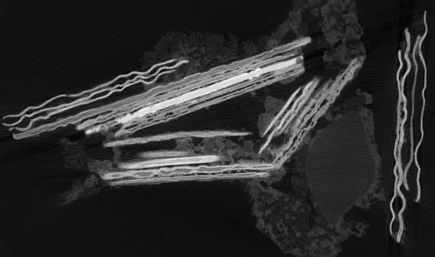
However, even the very first x-ray image was of surprisingly good quality. Twenty-four thin coins could be identified in cross-section, some stamped on one side, some on both. It was even possible to see on the image that some of the coins were made of two different metals. Early coins were often manufactured from copper-silver alloy and before being stamped they would be immersed in a bath of tartaric acid to dissolve out the copper. As a result, the coin is given a shiny silver surface. One of the coins in the purse was in fact made of pure silver. But this initial image was not enough for Empa’s x-ray specialist, however, and working carefully and precisely he was able to virtually manipulate the data so that, despite the severe corrosion, suddenly the embossed images and text could be seen on individual coins.
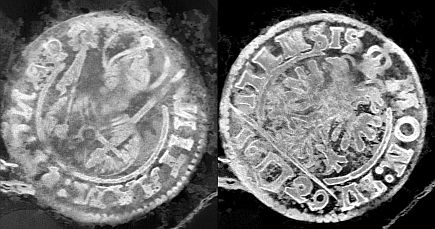
Of the coins from the purse which bear the year of manufacture, the latest dates from 1629 so the man must obviously have been buried after then. The coins also provide information about how the man lived. “It is possible he was a traveling merchant,” Christian Weiss thinks, “because we found coins in the purse from the Fribourg-Bern-Solothurn, Basel-Freiburg in Breisgau and Luzern-Schwyz regions”. At the time each of these areas had their own coins in local circulation.
“Taken together, the coins are really just small change,” says Weiss. “There is nothing in the purse equivalent in value to, say, a hundred franc note today.” He thinks it is unlikely that somebody took the more valuable coins and left the low value ones behind, and this fact counters the robbery – murder theory. It does not exclude murder for another reason, however, such as revenge. What exactly happened and why the man was buried in such an unusual way will probably remain a secret forever.
-
Share
